
Ken Burns
Рождение : 1953-07-29, Brooklyn, New York, USA
История
Celebrated American documentarian who gradually amassed a considerable reputation and a devoted audience with a series of reassuringly traditional meditations on Americana. Burns' works are treasure troves of archival materials; he skillfully utilizes period music and footage, photographs, periodicals and ordinary people's correspondence, the latter often movingly read by seasoned professional actors in a deliberate attempt to get away from a "Great Man" approach to history. Like most non-fiction filmmakers, Burns wears many hats on his projects, often serving as writer, cinematographer, editor and music director in addition to producing and directing. He achieved his apotheosis with The Civil War (1990), a phenomenally popular 11-hour documentary that won two Emmys and broke all previous ratings records for public TV. The series' companion coffee table book--priced at a hefty $50--sold more than 700,000 copies. The audio version, narrated by Burns, was also a major best-seller. In the final accounting, "The Civil War" became the first documentary to gross over $100 million. Not surprisingly, it has become perennial fund-raising programming for public TV stations around the country. Burns arrived upon the scene with the Oscar-nominated Brooklyn Bridge (1981), a nostalgic chronicle of the construction of the fabled edifice. The film was more widely seen when rebroadcast on PBS the following year. Though Burns has made other nonfiction films for theatrical release, notably an acclaimed and ambiguous portrait of Depression-era Louisiana governor Huey Long (1985), PBS would prove to be his true home. He cast a probing eye on such American subjects as The Statue of Liberty (1985), The Congress (1988) (PBS), painter Thomas Hart Benton (1988) (PBS) and early radio with Empire of the Air: The Men Who Made Radio (1991) (PBS). Burns returned to long-form documentary with his most ambitious project to date, an 18-hour history of Baseball (1994), which aired on PBS in the fall of 1994. He approached the national pastime as a template for understanding changes in modern American society. Ironically, this was the only baseball on the air at the time, as the players and owners were embroiled in a bitter strike.
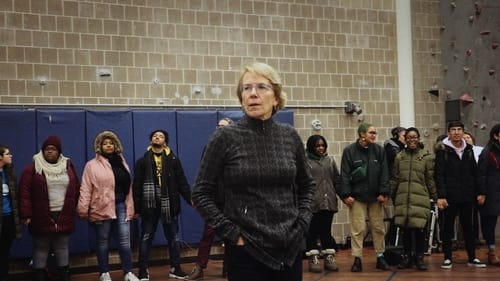
Self
In THE UNMAKING OF A COLLEGE, students at Hampshire College confront a new president's underhanded attempt to shut down their school and discover that a powerful institution is bullying an inexperienced administration into giving up the independence of one of the most experimenting colleges in the United States. A raucous ode to democracy in action, this film evokes the courage required to stand up to power at a time when many liberal arts colleges are failing.

Himself
Explore the filmmaker’s life and career in interviews with colleagues, friends and Burns himself. The importance of place emerges as a theme as he reflects on his own geographic touchstones, from the Brooklyn Bridge to small-town New Hampshire.
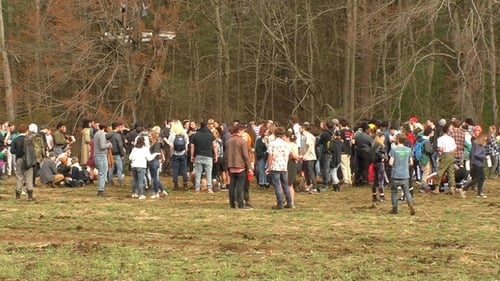
Self
Here For A Good Time tells the story of Hampshire College, a tiny liberal arts school in Western Mass with a reputation for really knowing how to party.

Producer
The history of the East Lake Meadows public housing project in Atlanta and the people who lived there from 1970 to its demolition in 2000, with special emphasis on the activism of Eva Davis asserting the rights of the tenants.

Executive Producer
The history of the East Lake Meadows public housing project in Atlanta and the people who lived there from 1970 to its demolition in 2000, with special emphasis on the activism of Eva Davis asserting the rights of the tenants.

Himself
The first documentary portrait of fashion icon Ralph Lauren, reveals the man behind the icon and the creation of one of the most successful brands in fashion history.

Director
The Mayo Clinic tells the story of a unique medical institution that has been called a "Medical Mecca," the "Supreme Court of Medicine," and the "place for hope where there is no hope." The Mayo Clinic began in 1883 as an unlikely partnership between the Sisters of Saint Francis and a country doctor named William Worrall Mayo after a devastating tornado in rural Minnesota. Since then, it has grown into an organization that treats more than a million patients a year from all 50 states and 150 countries. Dr. Mayo had a simple philosophy he imparted to his sons Will and Charlie: "the needs of the patient come first." They wouldn't treat diseases...they would treat people. In a world where healthcare delivery is typically fragmented among individual specialties, the Mayo Clinic practices a multi-specialty, team-based approach that has, from its beginnings, created a culture that thrives on collaboration.

Co-Director
The Mayo Clinic tells the story of a unique medical institution that has been called a "Medical Mecca," the "Supreme Court of Medicine," and the "place for hope where there is no hope." The Mayo Clinic began in 1883 as an unlikely partnership between the Sisters of Saint Francis and a country doctor named William Worrall Mayo after a devastating tornado in rural Minnesota. Since then, it has grown into an organization that treats more than a million patients a year from all 50 states and 150 countries. Dr. Mayo had a simple philosophy he imparted to his sons Will and Charlie: "the needs of the patient come first." They wouldn't treat diseases...they would treat people. In a world where healthcare delivery is typically fragmented among individual specialties, the Mayo Clinic practices a multi-specialty, team-based approach that has, from its beginnings, created a culture that thrives on collaboration.
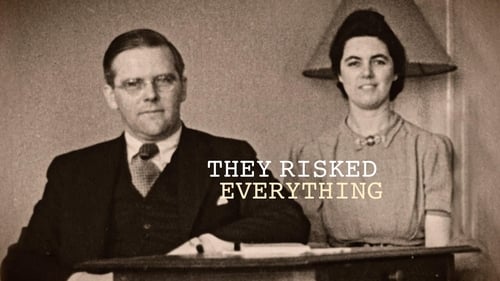
Executive Producer
Join an American couple’s courageous mission in 1939 to help refugees escape Nazi-occupied Europe. Over the course of two years, the pair will risk their lives so that hundreds can live in freedom.

Director
Join an American couple’s courageous mission in 1939 to help refugees escape Nazi-occupied Europe. Over the course of two years, the pair will risk their lives so that hundreds can live in freedom.

Thanks
Наше время на Земле подошло к концу, команда исследователей берёт на себя самую важную миссию в истории человечества — путешествие за пределы нашей галактики, чтобы узнать есть ли у человечества будущее среди звёзд.

Award-winning filmmaker Ken Burns sits down with OETA's Dick Pryor to discuss his latest documentary, "The Dust Bowl,' upcoming projects, and the thrill of filming America's history.

Director
The Gettysburg Address is the subject of a new documentary by Ken Burns. The documentary tells the story of students at the Greenwood School whose study of the Gettysburg Address brings new understanding to the speech.
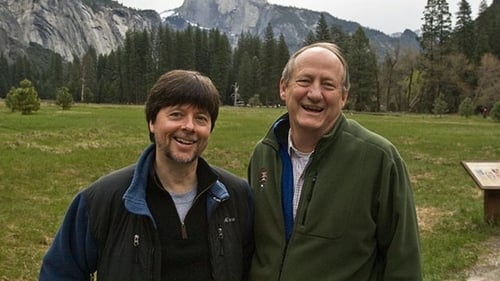
Director
Burns’ Yosemite: A Gathering of Spirit, a documentary film produced to honor the 150th anniversary of the landmark act signed by Abraham Lincoln. This act preserved Yosemite Valley and the Mariposa Grove of Giant Sequoias.

Himself
Plimpton! tells the story of writer, editor, amateur sportsman and friend to many, George Plimpton. Using Plimpton’s own narration – along with thoughts and stories from friends, family and contemporaries – the film is a joyful celebration of a life lived fully, richly, strangely, and, at times, a life that is hard to believe was actually lived by just one man.
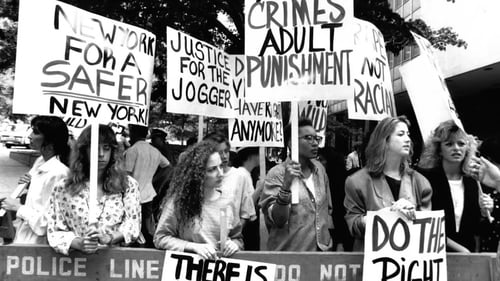
Screenplay
In 1989, five black and Latino teenagers from Harlem were arrested and later convicted of raping a white woman in New York City's Central Park. They spent between 6 and 13 years in prison before a serial rapist confessed that he alone had committed the crime, leading to their convictions being overturned. Set against a backdrop of a decaying city beset by violence and racial tension, this is the story of that horrific crime, the rush to judgment by the police, a media clamoring for sensational stories and an outraged public, and the five lives upended by this miscarriage of justice.

Director
In 1989, five black and Latino teenagers from Harlem were arrested and later convicted of raping a white woman in New York City's Central Park. They spent between 6 and 13 years in prison before a serial rapist confessed that he alone had committed the crime, leading to their convictions being overturned. Set against a backdrop of a decaying city beset by violence and racial tension, this is the story of that horrific crime, the rush to judgment by the police, a media clamoring for sensational stories and an outraged public, and the five lives upended by this miscarriage of justice.

Writer
In an age of globalization and deregulation, a cataclysmic strike over money and power brings baseball to the brink; dazzlingly talented Latin players transform the sport; Cal Ripken becomes baseball's new Iron Man; and Ken Griffey, Jr. and Barry Bonds are simply dazzling. The Braves dominate the National League while the Yankees build a new dynasty. As home run totals soar, sluggers Mark McGwire and Sammy Sosa smash one of the game's most hallowed records. Meanwhile, behind the scenes, players on every team must make life altering decisions about how far they are willing to go to succeed.

Director
In an age of globalization and deregulation, a cataclysmic strike over money and power brings baseball to the brink; dazzlingly talented Latin players transform the sport; Cal Ripken becomes baseball's new Iron Man; and Ken Griffey, Jr. and Barry Bonds are simply dazzling. The Braves dominate the National League while the Yankees build a new dynasty. As home run totals soar, sluggers Mark McGwire and Sammy Sosa smash one of the game's most hallowed records. Meanwhile, behind the scenes, players on every team must make life altering decisions about how far they are willing to go to succeed.

A history of the origin of National Baseball Hall of Fame and its first induction ceremony in 1939.
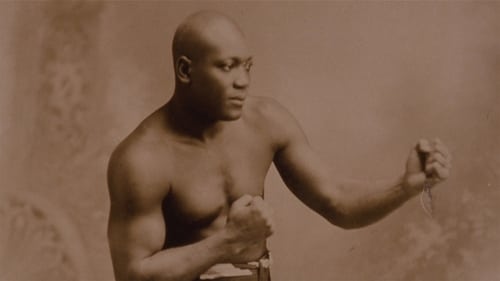
Director
The story of Jack Johnson, the first African American Heavyweight boxing champion.

Director
In the spring of 1903, on a whim and a fifty-dollar bet, Dr. Horatio Nelson Jackson set off from San Francisco in a 20-horsepower Winton touring car hoping to become the first person to cross the United States in the new-fangled "horseless carriage." Most people doubted that the automobile had much of a future. Jackson's trip would prove them wrong.

Director of Photography
Largely considered to be the greatest American author, Mark Twain is celebrated in this exhaustive documentary by filmmaker Ken Burns.

Producer
Largely considered to be the greatest American author, Mark Twain is celebrated in this exhaustive documentary by filmmaker Ken Burns.

Director
Largely considered to be the greatest American author, Mark Twain is celebrated in this exhaustive documentary by filmmaker Ken Burns.

Himself
This biography, shown on American television as part of the PBS "Great Performances" series, examines the life works of one of Hollywood's most celebrated animators, Chuck (Charles M.) Jones. He is best known for Warner Brothers cartoons featuring Bugs Bunny, Daffy Duck, Elmer Fudd, Porky Pig, Road Runner, Wile E. Coyote, and Pepe LePew. Included are plenty of behind-the-scenes descriptions of how an animated film is made, and (best of all) many clips from Chuck's cartoons.

Director
Acclaimed filmmaker Ken Burns directs this engrossing documentary trilogy about the life and work of writer, philosopher, painter and publisher William Segal, a lifelong student of Eastern thought and Western spiritual traditions. The first film in the series shadows Segal in his home art studio; the second follows him to the Vézelay basilica in France; the third accompanies him on the streets of Paris as he prepares for a gallery exhibition.

Producer
For 50 years radio dominated the airwaves and the American consciousness as the first “mass medium.” In Empire of the Air: The Men Who Made Radio, Ken Burns examines the lives of three extraordinary men who shared the primary responsibility for this invention and its early success, and whose genius, friendship, rivalry and enmity interacted in tragic ways. This is the story of Lee de Forest, a clergyman’s flamboyant son, who invented the audion tube; Edwin Howard Armstrong, a brilliant, withdrawn inventor who pioneered FM technology; and David Sarnoff, a hard-driving Russian immigrant who created the most powerful communications company on earth.

Director
For 50 years radio dominated the airwaves and the American consciousness as the first “mass medium.” In Empire of the Air: The Men Who Made Radio, Ken Burns examines the lives of three extraordinary men who shared the primary responsibility for this invention and its early success, and whose genius, friendship, rivalry and enmity interacted in tragic ways. This is the story of Lee de Forest, a clergyman’s flamboyant son, who invented the audion tube; Edwin Howard Armstrong, a brilliant, withdrawn inventor who pioneered FM technology; and David Sarnoff, a hard-driving Russian immigrant who created the most powerful communications company on earth.
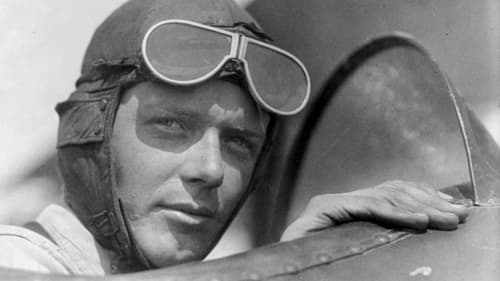
Producer
Charles Lindbergh lived a life of absolutes, never doubting his own abilities or the altitude of his own moral high ground. His extraordinary character brought him unparalleled accomplishment but also public humiliation and lonely isolation, as his faith in genetic determinism could barely conceal his narrow, naive, and racist social and political views.
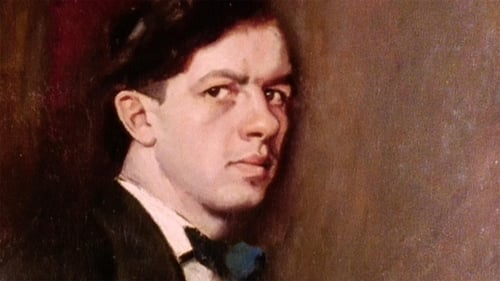
Producer
Thomas Hart Benton's paintings were energetic and uncompromising. Today his works are in museums, but Benton hung them in saloons for ordinary people to appreciate.

Director
Thomas Hart Benton's paintings were energetic and uncompromising. Today his works are in museums, but Benton hung them in saloons for ordinary people to appreciate.

Director
For 200 years, the United States Congress has been one of the country's most important and least understood institutions. In this elegant, thoughtful and often touching portrait, Ken Burns explores the history and promise of this unique American institution. Using historical photographs and newsreels, evocative live footage and interviews with David Broder, Alistair Cooke, Cokie Roberts, Charles McDowell and others, the award-winning film chronicles the personalities, events and issues that have animated the first 200 years of Congress and, in turn, our country.

Producer
For more than 100 years, the Statue of Liberty has been a symbol of hope and refuge for generations of immigrants. In this lyrical, compelling and provocative portrait of the statue, Ken Burns explores both the history of America’s premier symbol and the meaning of liberty itself. Featuring rare archival photographs, paintings and drawings, readings from actual diaries, letters and newspapers of the day, the fascinating story of this universally admired monument is told. In interviews with Americans from all walks of life, including former New York governor Mario Cuomo, the late congresswoman Barbara Jordan and the late writers James Baldwin and Jerzy Kosinski, The Statue of Liberty examines the nature of liberty and the significance of the statue to American life. Nominated for both the Academy Award ® and the Emmy Award ®, The Statue of Liberty received the prestigious CINE Golden Eagle, the Christopher Award and the Blue Ribbon at the American Film Festival.

Director
For more than 100 years, the Statue of Liberty has been a symbol of hope and refuge for generations of immigrants. In this lyrical, compelling and provocative portrait of the statue, Ken Burns explores both the history of America’s premier symbol and the meaning of liberty itself. Featuring rare archival photographs, paintings and drawings, readings from actual diaries, letters and newspapers of the day, the fascinating story of this universally admired monument is told. In interviews with Americans from all walks of life, including former New York governor Mario Cuomo, the late congresswoman Barbara Jordan and the late writers James Baldwin and Jerzy Kosinski, The Statue of Liberty examines the nature of liberty and the significance of the statue to American life. Nominated for both the Academy Award ® and the Emmy Award ®, The Statue of Liberty received the prestigious CINE Golden Eagle, the Christopher Award and the Blue Ribbon at the American Film Festival.

Producer
Ken Burns' portrait of Louisiana governor and U.S. senator Huey Long.

Director
Ken Burns' portrait of Louisiana governor and U.S. senator Huey Long.

Producer
They called themselves the United Society of Believers in Christ's Second Appearing, but because of their ecstatic dancing, the world called them Shakers. Ken Burns creates a moving portrait of this particularly American movement, and in the process, offers us a new and unusually moving way to understand the Shakers.

Director
They called themselves the United Society of Believers in Christ's Second Appearing, but because of their ecstatic dancing, the world called them Shakers. Ken Burns creates a moving portrait of this particularly American movement, and in the process, offers us a new and unusually moving way to understand the Shakers.

Director of Photography
Today it's a symbol of strength and vitality. 135 years ago, it was a source of controversy. This documentary examines the great problems and ingenious solutions that marked the construction of the Brooklyn Bridge. From conception to construction, it traces the bridge's transformation from a spectacular feat of heroic engineering to an honored symbol in American culture.

Director
Today it's a symbol of strength and vitality. 135 years ago, it was a source of controversy. This documentary examines the great problems and ingenious solutions that marked the construction of the Brooklyn Bridge. From conception to construction, it traces the bridge's transformation from a spectacular feat of heroic engineering to an honored symbol in American culture.



















